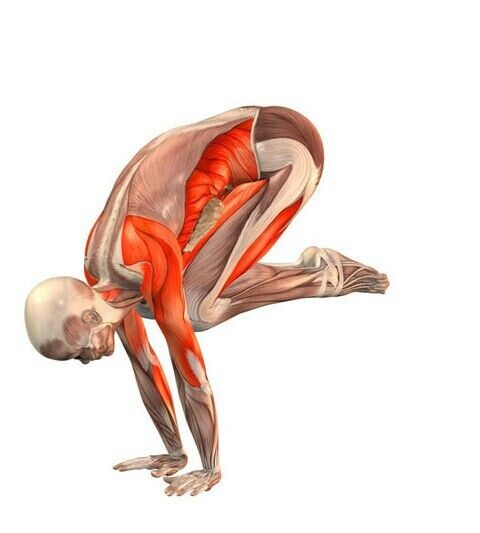Why is Yoga essential in any Strength Training Program
Yoga and strength training may appear as conflicting practices in nature but in essence, they complement each other perfectly, and here’s why:
Strength training is heavy and tough going, whereas yoga is fluid and soft going, and it’s precisely because of the conflicting nature of the practices, that they complement each other so well.
Yoga may appear to be nothing more than long and sustained stretches accompanied with some breathing techniques and seemingly no exertion at all, but this physical practice, combined with any form of strength training, is perfect for a stronger, leaner, and resilient physique.
When weight training your muscles adapt to the resistance of the weights and get stronger as more load is added. However, to develop a superior type of strength it is also essential to give your muscles a different kind of workout, one that helps you to build and maintain your range of movement and functional strength, which is exactly what yoga does.
THE GUIDE TO SUPERIOR STRENGHT
Developing Functional Strength
Firstly, what is functional strength? The overall definition of functional strength is that strength that gets you through life and daily activities. Having big muscles alone won’t help you with this; you must also have a calm nervous system capable of adapting to life’s challenges.
Functional strength is also the ability to both move and loads your joints (shoulders, hips, knees, and ankles) through a full range of motion without pain, stiffness, or restriction. This comes through moving your body in all possible directions, and so yoga can be the perfect solution to build up more strength as well as a more intelligent kind of movement.
If you want to get better at lifting weights; lift more weights. This is progressive overload at its simplest. However, the problem can come with the range of movement. Weight lifting emphasises a range of motion with more concentric contraction to build up mass, but for the full functional activity, we need to consistently add to our routine mobility and movement that has muscles reaching and stretching out with a very active core.
When lifting more and more weights, muscles grow in a single line joint track, exerting more pressure on anyone single joint. Add to this that muscle grows faster than connective tissue, and that is why your bicep might have the strength to curl a 20kg dumbbell, but your elbow might not be able to take the strain. https://yogigoals.com/yoga-and-weight-training/
If you see any full-body muscle chart or diagram you can clearly observe that the connective tissue and muscles spiral in a continuous sheet of fabric joining the entire body. Therefore the natural movement of these tissues is actually in spirals and not in the straight lines that we might perceive with the naked eye. Muscles wrap onto bone in a spiral fashion, like a piece of fabric might around your arm. The action of pulling in, and reaching out has that same spiraling motion, inwards and outwards through the core of the body, allowing the entire muscle chain to work throughout the connective tissue, which wraps bones and joints and connects to other muscles. Through doing this what you feel is a full body that is alert and ready to expand and contract to its fullest capacity.
YOGA CAN OFFER AN INJURY-FREE WEIGHT TRAINING
What is Connective Tissue?
As its name suggests it is the tissue that connects your body; for example, ligaments, tendons, fascia, cartilage, and bone. The function of this tissue is to protect, support, surround, cushion, strengthen, and stores energy, binding together different parts of the body. It is the most abundant and widely distributed tissue type. In one word it is the glue that holds you together.
When you allow your muscle development to outpace connective tissue adaptation, the result can be an injury.
When you start training your muscles improve rapidly as you add more and more weight. But if you don’t take into consideration movement through your connective tissue, feeling bones and joint capsules as you move, the next thing that might happen is that joints start to hurt, even though the muscles seemed fine when training. We then might start developing conditions such as tennis elbow, lower back pain, sciatica, stress fractures, and more. The reason for this is that the connective tissue can’t cope with the increased workload, and overdeveloped muscle strength. The good news is that you don’t have to stop doing the strength training you love, instead the answer is to add a supplementary workout that emphasises injury prevention, and this is where yoga can help.
Know your fast-twitch and slow-twitch muscle fibers
Weight lifting done correctly, with full-body compound lifts as well as with free-weights and machines in isolation, is performed in an explosive way, usually executed by your external large muscles, those muscles you can see and touch, such as hamstrings, latissimus dorsi, and trapezius, etc., activating your fast-twitch muscle fibers, helping you to develop power and speed.
When doing yoga, we tend to slow down the movement, holding poses with long-lasting breaths, with the body reaching out in all directions, awakening the small muscles attached to bones and joint capsules at the core of your body, the intrinsic muscles, like the multifidus muscle at the spine, and the rotator cuffs in the shoulder. Yoga practice takes you “in” to the body activating slow-twitch muscle fibers, which builds endurance, focus, and agility as well as a full range of muscle movement.
Another intelligent way to avoid injury is to awaken our 6th sense. This is called proprioception and our kinestetic felt sense, which is our awareness of where and how the body is moving and how it feels doing so. Yoga is a practice that aims to do this by slowing down, bringing awareness of internal bodily sensation, and by performing a movement with minimal effort, creating a space for reflection. In yoga, when done right, even if you’re doing challenging poses which cause you to sweat, you can feel completely relaxed at the end of the practice. This helps get rid of unwanted stress and allows the muscle to grow.
Yoga offers a more balanced approach to the idea of strength training because:
- It reduces the risk of injury
- It gives you proportional power
- It gives you a recovery time, hence time to get stronger
- Helps you to develop functional strength
- Through stretching, yoga offers balance to the contraction of strength training
CONCLUSION
Weight lifting is a great practice to make you look and feel stronger, and yoga is great at building an even distribution of strength throughout the body, adding flexibility and balance. By combining weight lifting and yoga you can maintain a balance between both types of muscle fibers, and develop functional strength, reducing the chance of injury with appropriate resting times, allowing muscle growth, and haveing superior strength, raw power, and functional agility.
As practices they don’t just go together, they complement each other perfectly. That is why so many gyms in the country have added yoga classes into their schedules because they know that their clients will receive the benefit of the combined practices.
Marcela Wakeham is a Senior Yoga Teacher a Movement and Structural Therapist with more than 15 years of experience. She offers Yoga for Strength classes and at South Coast Gym in Lancing West Sussex.
For further info about how yoga heleps to burn calories, please go to


